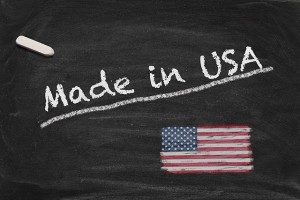 This year many U.S. companies are contemplating the unthinkable – they are either considering or actually bringing their manufacturing back to the U.S.
This year many U.S. companies are contemplating the unthinkable – they are either considering or actually bringing their manufacturing back to the U.S.
Of course, some manufacturing will always take place overseas, but it is plagued with common issues such as quality defects, the rising costs of shipping, long purchase commitments, foreign bureaucracy, intellectual property infringement, and the fact that staff is located thousands of miles away, many companies are rethinking their manufacturing strategy.
A key to success in manufacturing in the U.S. is through the application of Lean management principles focused on adding value with fewer inputs. Currently, about 70% of companies (The 2010 Compensation Data Manufacturing survey results) that manufacture in the U.S. utilize Lean manufacturing practices.
So what is the upshot of all this? Jobs! In January, the government announced that there will be tax incentives to manufacturing companies who switched their practices from outsourcing to insourcing. A study by the Boston Consulting Group even predicted a 2-3 million increase in manufacturing jobs nationwide over the next decade. This includes a 10-15% job growth in San Diego County, which would add 3,000- 4,500 jobs in the manufacturing sector.
At the same time, it must be acknowledged that companies outsource since labor costs are lower in some other markets. If manufacturers want to bring manufacturing back to U.S. shores, they need to implement other ways to add value in order to offset increased labor costs. To battle costs, companies need to implement Lean. For instance, out of the manufacturing companies surveyed in San Diego, 60% of them practice Lean.
According to Lean instructor Sammy Obara, “The core concept of Lean is the elimination of waste.” This elimination can be accomplished through Lean strategies and new company perspectives. This also does not start and end at manufacturing. According to Lean instructor Mike Osterling, “In manufacturing organizations we figured out that we need to shift the focus, not ignore the operations piece or manufacturing piece, but we need to also include the administration processes. Through that transition, we’ve learned that if we are in a product design environment, human resources department, or finance and accounting functions, that there are opportunities to improve service to external and internal customers.”
Thinking Lean helps manufacturing as well as other sectors of the company to increase quality, service, and productivity, which is paramount to bringing more jobs back to the U.S.


